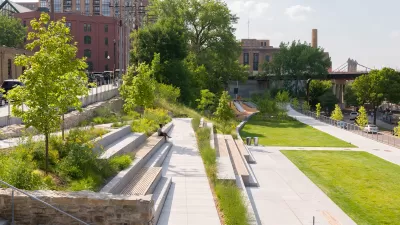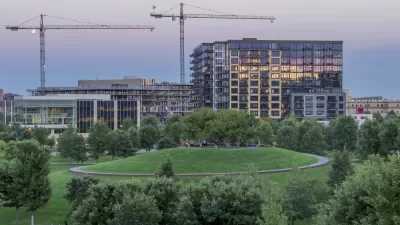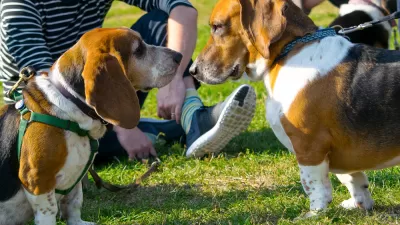A park planned to accompany Minneapolis' new football stadium has raised controversy because of the amount of proposed subsidies. While the details are worked out, planners consider the elements that will ensure its success.
The new park, which will accompany the city's new football stadium, will bring welcome green space to downtown Minneapolis. However, the park and an adjacent parking garage have been approved for city bonds that push it into controversial and, some say, illegal territory by exceeding the state's allowable threshold for spending on infrastructure improvements.
"A lawsuit filed last week argues that this violates state laws for the stadium’s public funding, which capped infrastructure improvements at $150 million. The Yard and adjacent parking lot, the lawsuit argues, fall under that umbrella and push it over the $150 million threshold," writes Bill Bradley.
However, many remain optimistic about the fate of the park and have moved on to questions about how to make the park successful with programming: "[A]s Streets.MN wrote last week, 'By far the most important piece of a successful park is not its design but rather its programming.' The Yard will host tailgaters during Vikings’ home games, but it can’t just be a bunch of guys wearing purple and yellow chugging High Life on Sundays. The city needs to think about ice rinks, potential vendors, concert series, festivals — the sort of programming that makes it a destination 365 days a year," urges Bradley.
FULL STORY: Massive Park-Centered Development Could Transform Downtown Minneapolis

Trump Administration Could Effectively End Housing Voucher Program
Federal officials are eyeing major cuts to the Section 8 program that helps millions of low-income households pay rent.

Planetizen Federal Action Tracker
A weekly monitor of how Trump’s orders and actions are impacting planners and planning in America.

Ken Jennings Launches Transit Web Series
The Jeopardy champ wants you to ride public transit.

USDOT Waters Down Self-Driving Car Regulations
The agency is reducing reporting requirements for autonomous vehicles and cars with self-driving features, prompting concern among safety advocates who say transparency is essential to the safe deployment of AV technology.

‘Minnesota Nice’ Isn’t so Nice When You Can’t Find a Place to Live
The Economic Development and Housing Challenge Program can help address the scourge of homelessness among Indigenous people.

NYC Open Streets Organizers Call for City Support
The number of open streets projects has dropped year after year as volunteer groups struggle to fund and staff them.
Urban Design for Planners 1: Software Tools
This six-course series explores essential urban design concepts using open source software and equips planners with the tools they need to participate fully in the urban design process.
Planning for Universal Design
Learn the tools for implementing Universal Design in planning regulations.
Heyer Gruel & Associates PA
Ada County Highway District
Institute for Housing and Urban Development Studies (IHS)
City of Grandview
Harvard GSD Executive Education
Toledo-Lucas County Plan Commissions
Salt Lake City
NYU Wagner Graduate School of Public Service





























